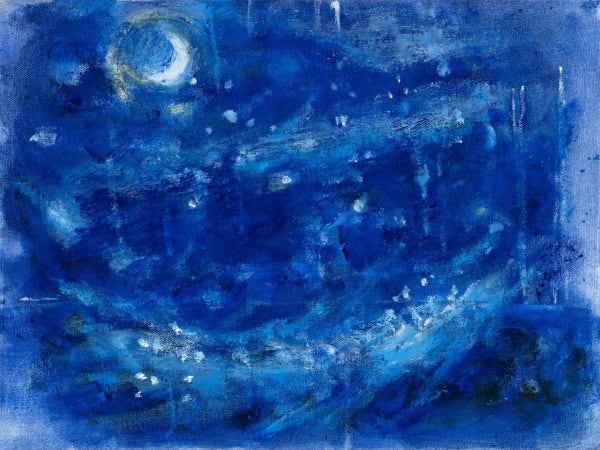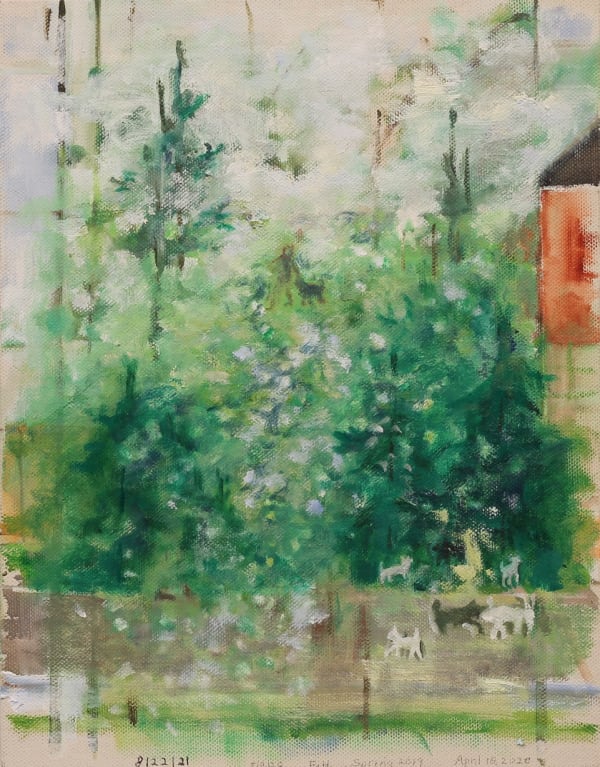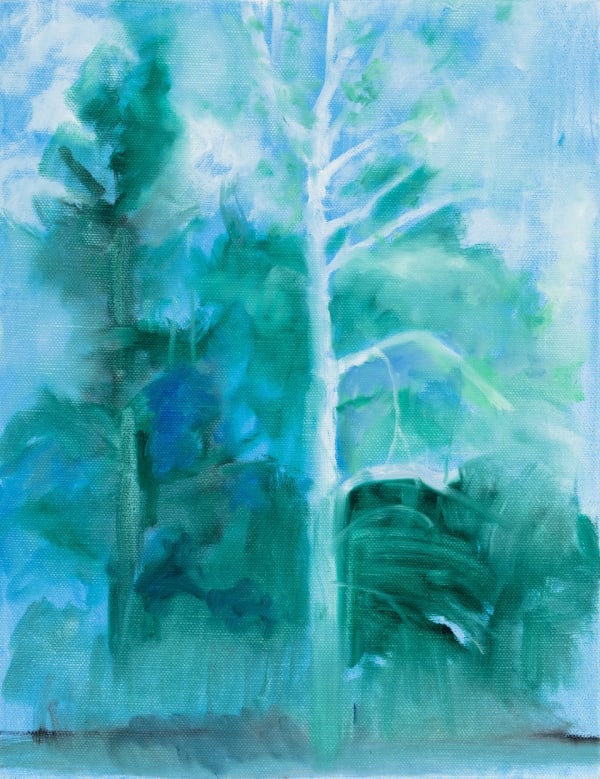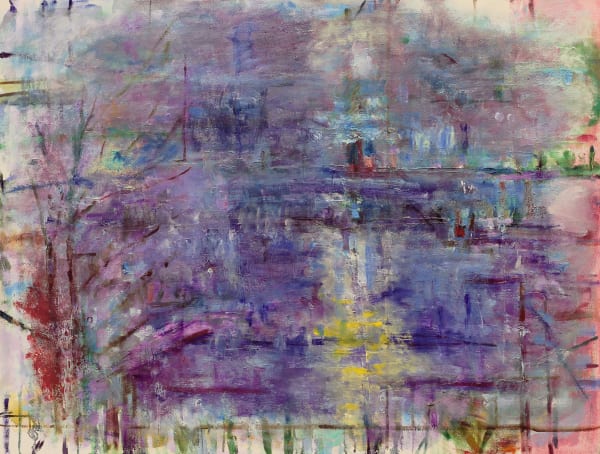Frances Hynes’s Nocturnes and Memories exhibit is currently on display at our Falmouth, Maine location. This body of work, being placed parallel to Brita Holmquist’s Silence exhibit within the gallery, is a perfect representation of Frances’s remarkable creative capabilities as an artist. Frances gladly answered a series of insightful questions we had pertaining to her current exhibit here. Enjoy!
1. As an artist how do you navigate the space between representational and abstraction?
"My paintings with images have all the important components of an abstract painting. These elements in my painting are paramount: structure, color, space, line, shape, etc. My work has my unique mark-making and paint handling as well. The image is the bonus. I love painting. And believe that there are many approaches to making a great painting. About every 10 years I have reinvented myself as a painter and I have created unique paintings using varied approaches. Sometimes I wonder how I do this. House of Night and Day is a painting at the gallery and it is very abstract and minimal. That approach to painting, which is how I painted in the 1980s began to feel limiting. I wanted to let more of life and the world into my work and include landscape, seascape, people, animals, weather, and atmosphere. There is a structure to my work whether it is abstract or has imagery, that is constant. The breakup spaces remain true."
2. Green seems to be an important color in your palette for this show, can you speak to this?
"Green is a difficult color to work with and I decided to accept this challenge. It is so pervasive in the summer landscape. I was working outdoors when I began Man Plowing, Cottage at Pemaquid and Rock Gardens Inn. I wanted to mix a range of greens and different greens, nature is a great teacher, so many greens to observe and mix on the palette. I also wanted to project the sun and light of my summer days."
3. In your mind what is Maine’s role in American art? What is it about Maine’s legacy that calls to you as an artist, and can you talk about your relationships with notable Maine artists?
"In about 1975 I went out to Monhegan Island. My first couple of summers there I don’t remember doing much painting. The quiet, meditative atmosphere and the fact that the island cleared the head and allowed me to return to painting with a fresh eye was very important. I always made a ‘breakthrough’ in my work after a trip to Monhegan. In later years I painted on the island. Now in 2021: the weather, air, landscape, and sea are a constant call to paint. About Maine artists: I love the seascapes of Winslow Homer. Lois Dodd, her genius and simplicity to look at the every day and make great paintings, is an inspiration. Will Barnet and his support for all art and artists, is an inspiration. He emphasized structure in painting and also drew his inspiration from his family and everyday life. Stephen Pace painted the landscape and seascape from his home in Stonington, Maine. The Wyeth Family is amazing: that commitment to art over generations, and always unique and powerful approach to imagery. The artists I came in contact with on Monhegan come to mind: Lynne Drexler, Ted Daves, and others. I remember the Hubert’s presenting Fitzgerald’s work in his studio. Rockwell Kent does great painting. Bruce Brown, curator, and a photographer was the first person in Maine to show my work at Maine Coast Artists in Rockport. Suzette McAvoy, a former curator at the Farnsworth, bought my painting for the Farnsworth Museum early in my career. I appreciate my friend Richard Keen and all the artists he has introduced me to at Fort Andross in Brunswick. And Liz Moss is terrific, she has an understanding of my work and the ability to articulate what my painting is about."
4. The title of your show is Nocturnes and Memories, is there a specific relationship for you between nighttime and the act of remembering?
"I did a lot of the night paintings in this show during the time of the Covid epidemic. Some are memories of my evening walks in Maine in 2019, I often use photographs as an aid to memory, some are views from my window painted in 2020 and 2021. Night or Day I often sit in silence and recall times, places, and people from the past."
5. You invite your viewers to form their own narrative from your paintings of personal memories. How do you balance the personal element of your work with the idea of asking viewers to create their own narrative?
"Every mark, every brushstroke has a meaning and needs to be considered. The vertical/horizontal scaffolding of my work may suggest the grid of buildings or verticality of trees, the horizon line of the ocean, etc. My paintings I hope will draw the viewer in and suggest a meditative space. Memories of places and homes where good times were shared are universal. I hope my paintings allude to these."
6. What role does the grid play in this body of work?
"The grid is a structuring device. Our cities are often laid out in a grid pattern. Much of our architecture is structured as a horizontal/vertical grid. I see it as a very strong structuring device but in my work, it also suggests layers of space and frames the view as a window does. The opposites of here/there and inside/outside are important components in my work. The edges of my paintings are very, very important. They show the history of the work and the thought process. How did the painting evolve and change, the answer is at the edges."
7. Can you talk more about how you incorporate text and note takings in your paintings?
"As some even have dated writings on the backside. My paintings develop over a span of time and require a lot of thought and assimilation. I often live with them for years before I consider showing them and letting them go out into the world. I want viewers and art lovers to be aware of this, so I add the dates on which I worked on the paintings. A sense of place is also important to my work—Where was I, what place was I evoking, what hour of the day. I like a narrative the words add to it, and what is crossing my mind as I paint. Who am I thinking about, what place, what event. Past/Present are two other opposites I like to echo in my work."







